Iguanas can be destructive to the landscapes and plants that you have. Having plants iguanas don’t eat can deter them from coming into your garden. Below is a list of plants iguanas don’t eat.
1. Croton (Codiaeum Variegatum)

| Difficulty to Grow | Very Easy |
| Max Height | 3 feet |
| Temperature | Warm ~70°F |
| Sun Exposure | Full/ Part Sun |
Native to Malaysia and India, croton plants have thick leaves with a leathery texture varying in colors, shapes, and sizes. As the croton plant ages, it can turn to a darker color, close to black. These plants prefer warmer weather but they are easy to care for. However, when crotons are damaged, it produces a milky sab that could irritate your skin.
2. Purple Queen (Tradescantia Pallida)
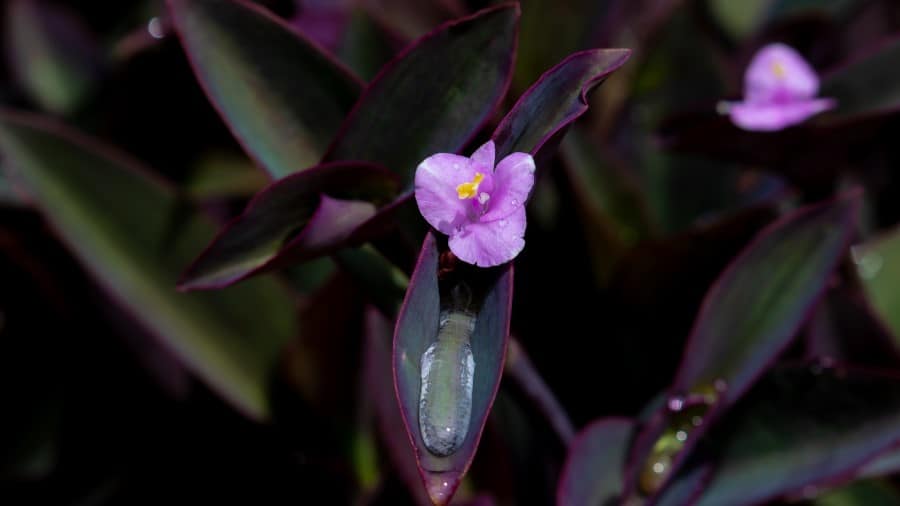
| Difficulty to Grow | Easy |
| Max Height | 1.5 feet |
| Temperature | Cold ~40°F |
| Sun Exposure | Full/ Part Sun |
Purple queen, as the name suggests, has purple everything! They have purple stems and flowers in lavender color. Native to northeast Mexico, they are also commonly known as purple heart or purple heart wandering jew. They are a stunning plant if you do grow it in your garden.
3. Ixora (Ixora Taiwanensis)
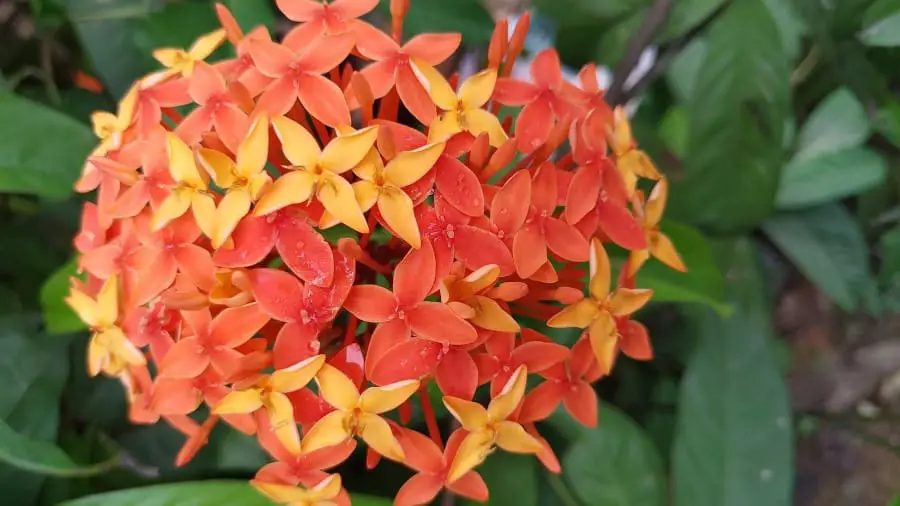
| Difficulty to Grow | Easy |
| Max Height | 2 feet |
| Temperature | Warm ~65°F |
| Sun Exposure | Full/ Part Sun |
Ixora is a compact plant that grows closely to each other. Native to Asia, their flowers can have a color of red, white, yellow, or orange. They thrive in warm temperature and is relatively easy to grow outdoors. Low temperatures can cause Ixora’s leaves to fall.
4. Oleander (Nerium Oleander)

| Difficulty to Grow | Very Easy |
| Max Height | 8 – 12 feet |
| Temperature | Cold ~20 – 40°F |
| Sun Exposure | Full Sun |
Oleanders are relatively easy to grow as they can tolerate drought without any issues. They are absolutely beautiful plants that can have a range of colors. These include pure white, light yellow, peach, pink, and dark red. Some varieties of oleander have a fragrant smell too!
5. Lilyturf (Liriope Muscari)
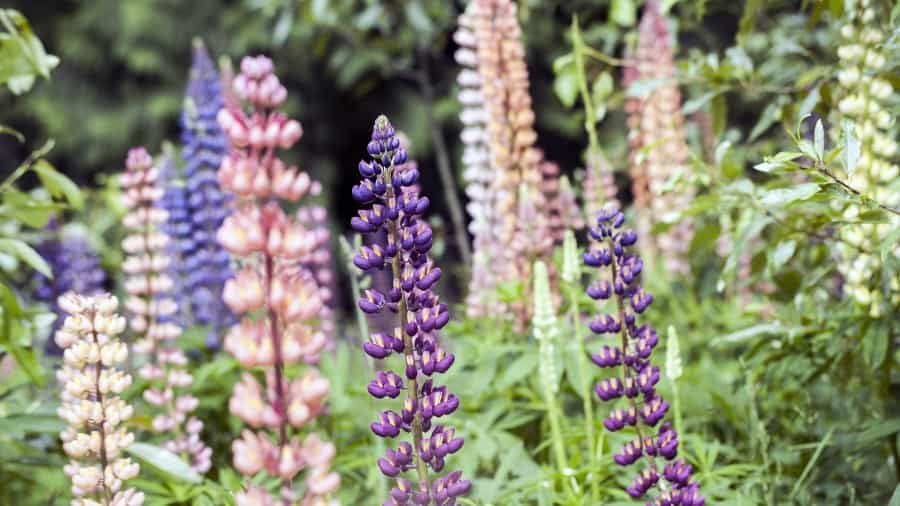
| Difficulty to Grow | Very Easy |
| Max Height | 1.5 feet |
| Temperature | Warm ~68 – 75°F |
| Sun Exposure | Full/ Part Sun |
Lilyturf plants are native to China, Taiwan, and Japan. These plants form a dense clump of narrow, arching, dark green leaves with small violate flowers all over when it blooms. In English, they are also commonly known as blue lilyturf, border grass, and monkey.
6. Society Garlic (Tulbaghia Violacea)
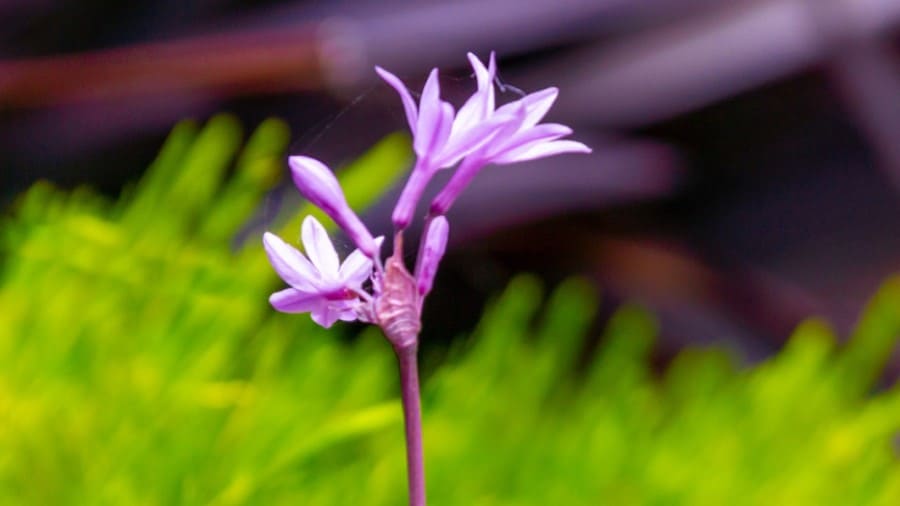
| Difficulty to Grow | Easy |
| Max Height | 1.5 feet |
| Temperature | Cold ~40°F |
| Sun Exposure | Full Sun |
Society garlic is a delicate plant with purple flowers with a star shape. They are native to eastern South Africa in the rocky grasslands. Other than looking beautiful, the flowers and leaves are edible. You can use them to cook soup or make salads.
When bruised, they exert a strong garlic smell. Moreover, they also have good heat and drought tolerance but require moisture consistently during the growing season.
7. Chenille (Acalypha Hispida)
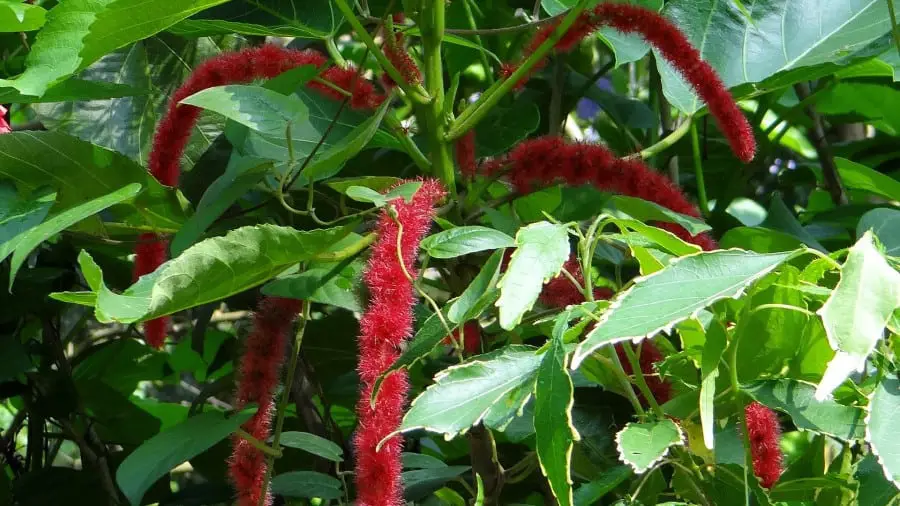
| Difficulty to Grow | Very Easy (Depends on Weather) |
| Max Height | 15 feet (tropical climate) & 3 feet (in containers) |
| Temperature | Warm >60°F |
| Sun Exposure | Full Sun |
These plants are known for their production of fuzzy red flowers that look like caterpillars. Chenille plants are visually pleasing for many people.
They are native to the Philippines and New Guinea. Chenille plants are relatively easy to grow given the area is warm and humid. It can, however, be hard to grow in the place you stay if the conditions they need are not met.
8. Silver Buttonwood (Conocarpus Erectus)

| Difficulty to Grow | Hard |
| Max Height | 40 feet |
| Temperature | Cold ~40°F |
| Sun Exposure | Full/ Part Sun |
Silver buttonwood is a small tree with soft, silvery grey colored leaves. This will give your garden a beautiful contrast to the usual green looks.
When compared to other green plants, the silver buttonwood almost looks white. However, it also has a green variety but most people prefer the silver since it is more unique.
These are not the easiest plant to grow. It is true that they are drought resistant when matured but before that, you have to give it constant care and water.
Moreover, you have to fertilize it 3 times a year. You can trim it but don’t do hard pruning of more than one-third of the plant.
9. Mexican Petunia (Ruellia simplex)
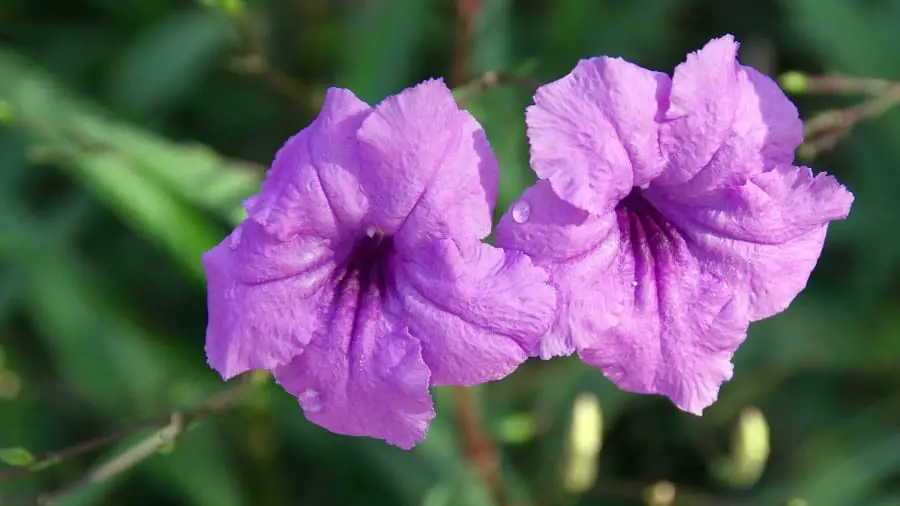
| Difficulty to Grow | Very Easy |
| Max Height | 1 feet (dwarf type) & 3 feet (tall type) |
| Temperature | Hot ~80°F |
| Sun Exposure | Shade & Part Sun |
Mexican petunia is an erect, multi-stemmed plant with long leaves that are dark green. They are famous for their trumpet-shaped flowers that come in purple, white, and pink.
These plants require very little maintenance and love the shade. This is an excellent choice if you want to have beautiful plants in your garden that iguanas don’t eat.
10. Cordyline (Cordyline Australis)

| Difficulty to Grow | Medium |
| Max Height | 4 feet |
| Temperature | Warm >60°F |
| Sun Exposure | Indirect Sunlight |
Cordyline is an awesome plant that thrives both indoors and outdoors. They are a decorative plant that has leathery spear-shaped leaves that comes in a variety of colors. These colors include red, green, white, yellow, purple, and purplish red.
These plants need to be kept in a place where it is humid and gets a lot of light and is warm. Bright light is important to them but avoid direct sunlight unless their leaves are green.
Other than that, keep under bright indirect, or filtered sunlight, otherwise, their leaves may fall.
Planting An Iguana Proof Garden
If you live in an area where iguanas are destroying your garden, planting some of the above-mentioned plants will be a good idea.
However, if you already have some expensive plants in your garden, I do not recommend that you remove them all at once. My suggestion is selectively removing these plants over time so eventually, you will have an iguana proof garden.
This way, you will not overwork yourself and get shocked at how different your garden looks all of a sudden.
Slowly plant more and more plants iguanas don’t eat. This way, your garden is not a buffet for iguanas.
Some of the worst plants to plant in your garden when trying to prevent iguanas from destroying it include Hibiscus, Orchids, and Bougainvillea.
Conclusion
There you go, here are the 10 plants that iguanas don’t eat. Plant some or most of these in your garden so they will not be destroyed by iguanas.
On top of that, most of these plants are visually stunning as well. It is not like you are giving up beauty for an iguana proof garden.
Do note that not all of these plants will be available to plant in your particular area. Some of these plants may need specific weather conditions that your area just does not have.

